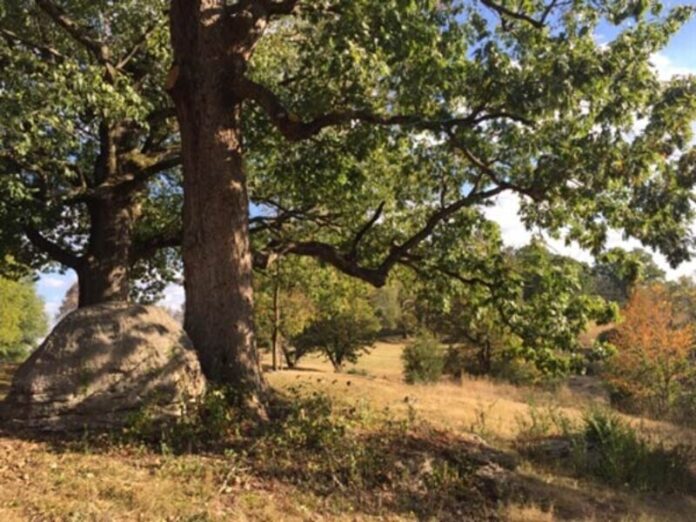
How often do we think of the stories that nature could tell? And yet, there are trees and other plantings that have been here long before we were born. Many have stood over events that have echoed through time. On the campus of the Historic Sam Davis Home and Plantation, there stands a white oak tree that is famous for hiding Sam Davis’ horse the last time he visited his family on November 14, 1863 before being captured for being a Rebel spy during the Civil War and hung.
“[Although] this famous tree lost its highest branches during a windstorm in 2020, its most important limb, the one to which Sam Davis tied his horse…remains,” said C. Stephen Murfree in his article about the tree in the Blue and Gray Dispatch. “In the past, many a middle Tennessee school child, after learning the significance of that limb from a site interpreter, has swung from that limb. Unfortunately, the limb has grown too high to be easily reached for a good swing today.”
Now, those wishing to nurture a piece of this history can purchase a sapling propagated from this famous tree through American Heritage Trees at https://americanheritagetrees.org. The organization reached out to the Sam Davis Home to see if they might be interested in partnering in this endeavor.
According to the American Heritage Trees website, “Confederate hero Samuel Davis was born October 6, 1842 near Smyrna, Tennessee. In February 1861 he became a Cadet at the University of Nashville Military College…The Civil War commenced not many weeks following and the Cadet became a Private in the army: Company I (Rutherford Rifles), 1st Tennessee Infantry Regiment. At an unspecified date in 1863, Sam was selected as a member of the Coleman Scouts. The Scouts worked behind the Federal lines tracking the movements of the Union army…[T]he enemy saw them…as spies. On November 20, 1863, while resting en route to Chattanooga, Private Davis was captured…In his saddle seat was hidden information on Federal troop placement and strength between the Tennessee River and Nashville. This information had been taken from the headquarters of Union Brigadier-General Grenville Dodge.”
Offered freedom in exchange for the name of his informant or the location of the head of the Coleman Scouts, Davis famously said: “If I had a thousand lives I would lose them all here before I would betray my friend, or the confidence of my informer.” He was hung at 10:30 a.m. on Friday, November 27, 1863.
The Davis family was instrumental in having the home where Sam Davis was born and grew up turned into a museum in the 1930s. It was purchased by the state of Tennessee in 1927, with tours and management of the facility taking place under the guidance of the Sam Davis Memorial Association.
This is not the only piece of history that American Heritage Trees, located in Lebanon, Tennessee, has to offer in the form of saplings available for purchase. Those who are fans of Edgar Allen Poe can purchase a boxwood from the Edgar Allen Poe Museum in Richmond, Virginia. If Alex Haley’s book “Roots” is more interesting, then order a Crepe Myrtle from his grandparent’s home in Henning, Tennessee where he first heard the family stories about “Kunta Kinte” and “Chicken George” from visiting relatives. Or perhaps you’d prefer a pecan tree (no, not peanut) from the home of former president Jimmy Carter.
The trees run between $75 and $150 depending on their size and other factors. They are raised on the Rice Farm, a Tennessee Century Farm, by owners Tom and Phyllis Hunter. They bought the family farm in 2013 and started the 501(c) 3 non-profit American Heritage Trees. Tom Hunter is directly related to the Rice family, and is a cousin to the former owner.
Andrew Jackson originally owned the land where the Rice Farm is located and he sold it to John Rice in 1800 for $1 per acre. Although passing from generation to generation, the land has remained in the Rice family since that original purchase from Jackson.
To learn more about Sam Davis Home, click here. A tree can be purchased here. The Blue and Gray Education Society can be reached here.















